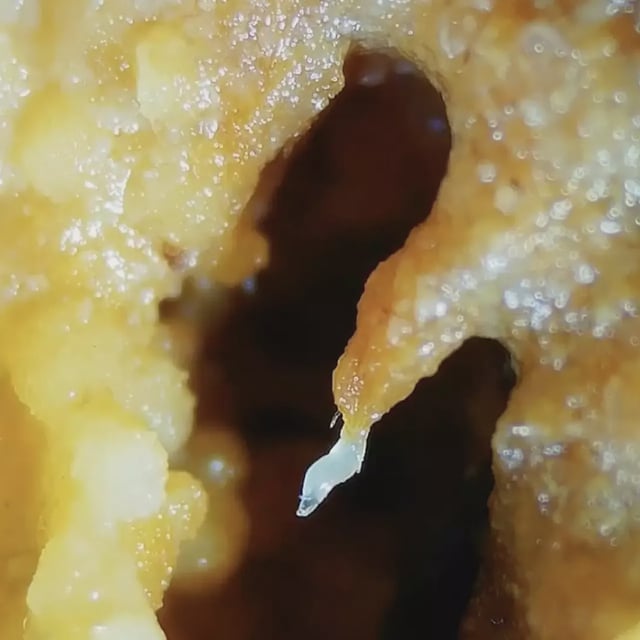Overview
- Researchers filmed nematode towers in decaying apples and pears in Konstanz orchards, confirming that the behavior occurs in nature
- Each structure is formed exclusively by dauer-stage larvae of a single nematode species when food is scarce and competition intensifies
- Towers can extend exploratory arms to bridge gaps and react to touch by growing toward stimuli such as passing fruit flies
- Laboratory trials with Caenorhabditis elegans showed that hungry larvae assemble towers on a toothbrush bristle within two hours, mirroring field observations
- The discovery establishes a new model for studying the ecology and evolution of collective dispersal in microscopic animals

